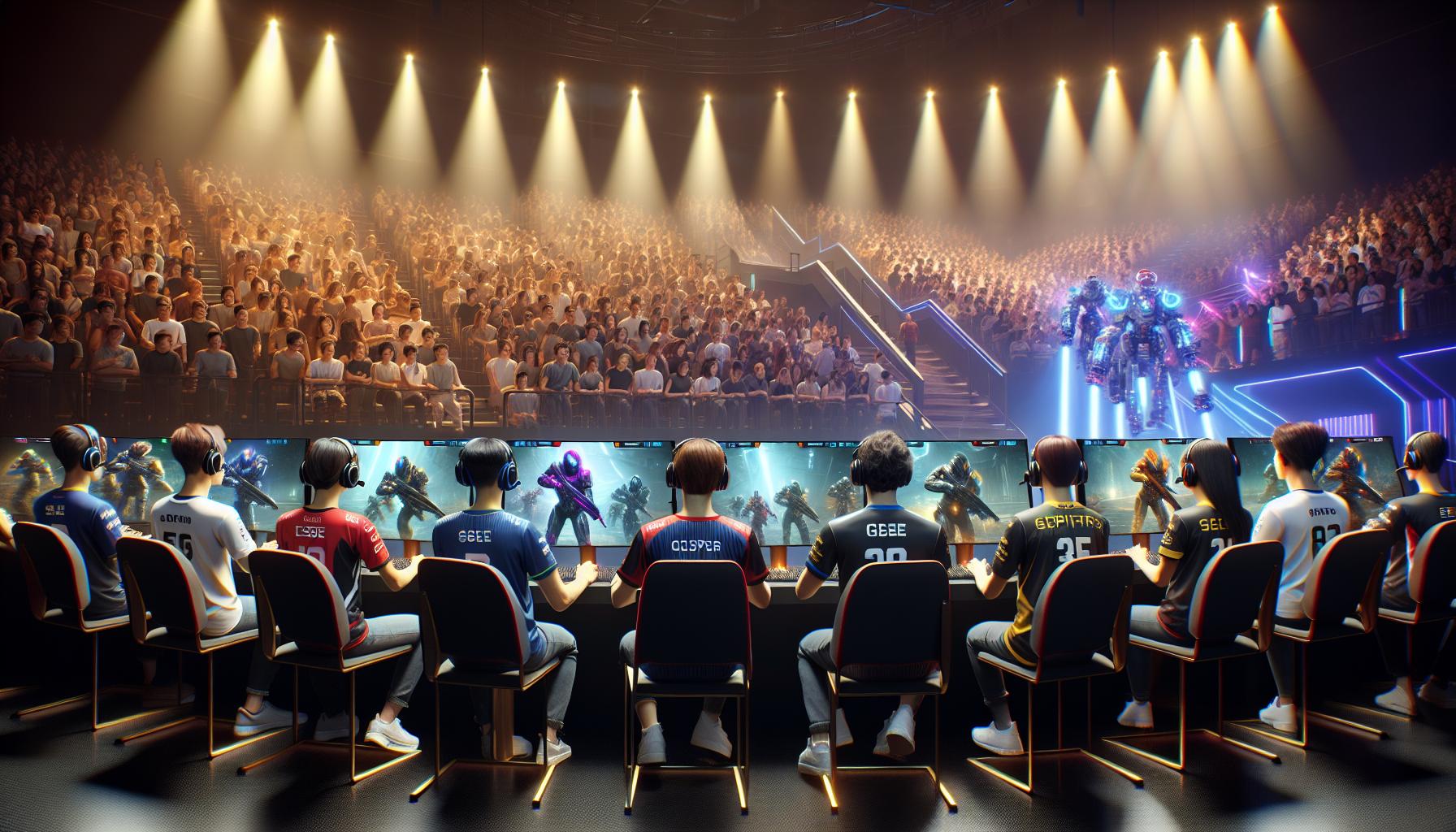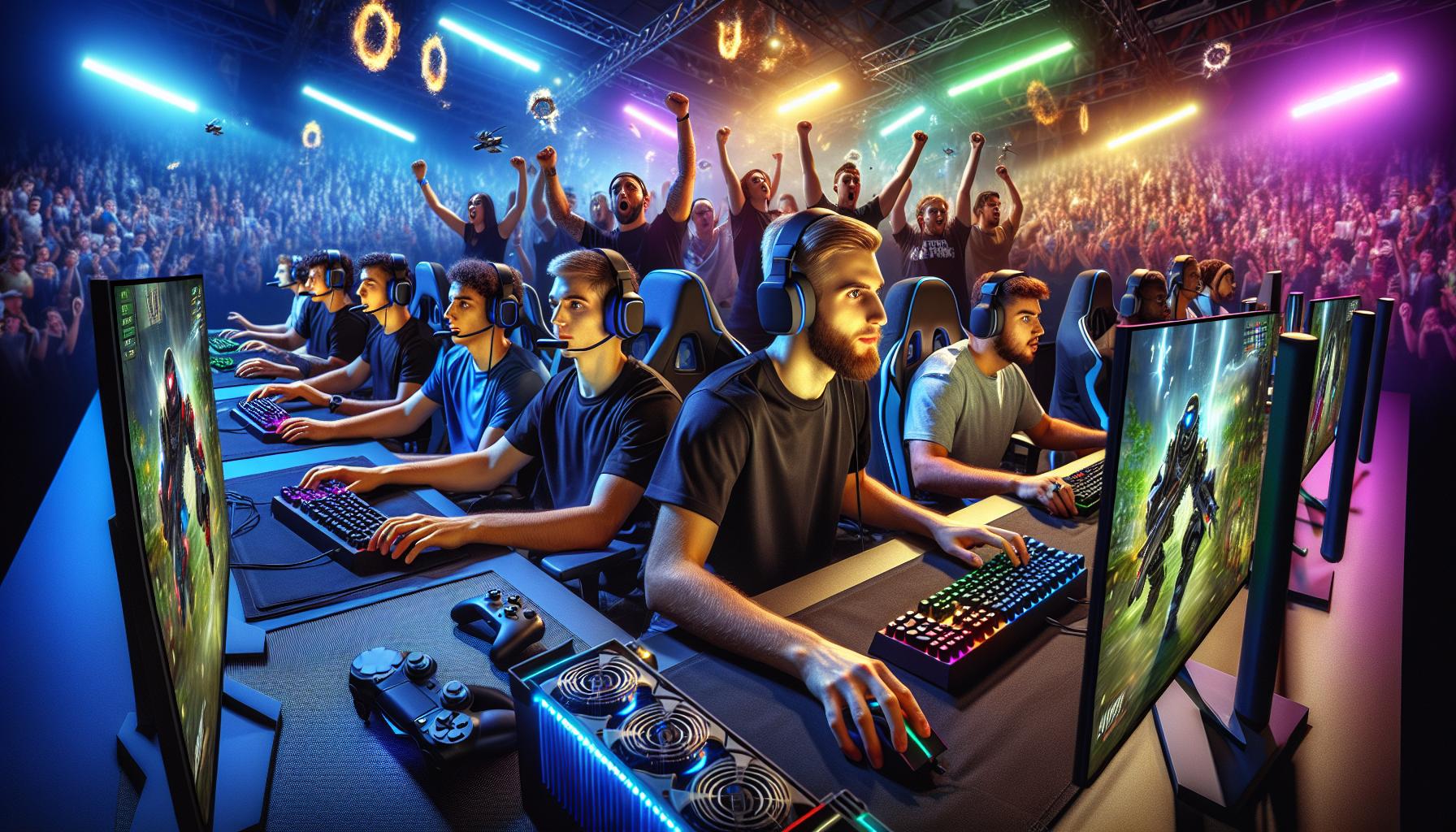Key Takeaways
- Evolution of Halo Esports: Halo esports has transformed from grassroots competitions in the early 2000s to a globally recognized competitive scene, establishing a significant presence in esports history.
- Key Game Releases: Landmark releases like Halo: Combat Evolved, Halo 2, and Halo 3 introduced innovative multiplayer features and mechanics that propelled the franchise’s popularity and competitive spirit.
- Major Tournaments: Iconic tournaments like the Major League Gaming (MLG) events and the Halo Championship Series (HCS) have showcased top-tier talent and created memorable moments for fans, shaping the competitive landscape.
- Community Growth: The passionate Halo community, supported by dedicated esports organizations, has played a vital role in driving competition and fostering player development within the scene.
- Challenges and Resilience: Despite facing challenges like declines in popularity and competition from other titles, Halo esports remains resilient, adapting and flourishing through recent tournaments and community engagement.
- Promising Future: With ongoing developer support, anticipated game updates, and a dedicated player base, the future of Halo esports looks bright, indicating continued growth and revitalization within the competitive gaming sphere.
The world of Halo esports has witnessed an incredible evolution since its inception, captivating gamers and fans alike. From its humble beginnings in local tournaments to becoming a global phenomenon, Halo has carved out a significant niche in competitive gaming. This franchise not only redefined first-person shooters but also laid the groundwork for esports as we know it today.
As players and teams emerged, so did a passionate community dedicated to the Halo universe. Iconic tournaments like the Halo Championship Series have showcased some of the most skilled players, creating unforgettable moments that resonate with fans. Understanding the history of Halo esports reveals the journey of innovation, rivalry, and the relentless pursuit of excellence that has shaped its legacy.
Halo Esports History
Halo esports emerged in the early 2000s, gaining traction through grassroots competitions. Local gaming events laid the foundation for a passionate community that thrived on competition. As Halo: Combat Evolved debuted in 2001, its multiplayer aspects captured players’ attention, leading to the rise of LAN tournaments.
Halo 2, released in 2004, accelerated the scene’s growth with its matchmaking capabilities and online play. Major tournaments like MLG (Major League Gaming) featured top players from around the globe, establishing Halo as a respected title in competitive gaming. In 2014, the Halo Championship Series (HCS) adopted a formal structure, creating a pathway for players and organizations to participate in high-stakes competitions.
Numerous tournaments, including regional and international events, showcased high-level gameplay and innovative strategies. The introduction of Halo: Master Chief Collection revitalized interest, merging classic titles into a single platform. Consequently, Halo esports expanded, inviting new players and reinvigorating the competitive landscape.
In recent years, Halo Infinite has taken center stage, offering opportunities for new talent and experienced players alike. The game’s dynamic mechanics and fresh content have maintained player engagement. As competitive gaming grows, Halo esports continues to evolve, reflecting the community’s dedication and passion.
Early Days of Halo Esports

Halo esports began its journey in the early 2000s, driven by grassroots competitions and enthusiastic players. This vibrant community established the groundwork for what would become a significant force in competitive gaming.
The Launch of Halo: Combat Evolved
Released in 2001, Halo: Combat Evolved introduced groundbreaking multiplayer features that captivated gamers. This title’s LAN capabilities enabled local tournaments, allowing players to compete in-person. Enthusiastic fans formed communities, hosting events that showcased emerging talent and fostered competition. These local competitions marked the beginning of Halo’s ascent in esports.
Key Tournaments and Events
Several pivotal tournaments shaped Halo esports during its infancy. The rise of LAN parties and local events expanded into organized competitions, with MLG (Major League Gaming) leading the charge. MLG’s 2004 tournament featuring Halo 2 drew significant attention, as the game’s matchmaking capabilities provided an engaging player experience. These events attracted talented players and amplified Halo’s status in competitive gaming, laying the foundation for future developments in the esports landscape.
Growth of the Halo Community

The Halo community has flourished through competitive play and the establishment of dedicated esports organizations. This growth has significantly influenced the game’s popularity and its status within the esports realm.
Rise of Competitive Play
Competitive play in the Halo franchise surged with grassroots events and local tournaments, engaging players in friendly yet intense matchups. The introduction of Halo 2’s online matchmaking in 2004 revolutionized competitive gaming, allowing players to connect globally. Major League Gaming (MLG) embraced Halo, hosting their first significant tournament that year, which attracted thousands of viewers and participants. This event showcased top-tier talent and helped solidify Halo’s position in competitive gaming. Subsequent tournaments, including the Halo Championship Series (HCS), further elevated the competitive scene by offering structured leagues and substantial prize pools, driving players to refine their skills and enhance competition.
Formation of Esports Organizations
Esports organizations played a vital role in the growth of the Halo community. As competitive play intensified, organizations emerged to support teams, provide resources, and facilitate participation in professional competitions. Teams like OpTic Gaming and Cloud9 began recruiting talented players, creating a pathway for individuals to pursue careers in gaming. These organizations fostered a sense of community and loyalty among fans, organizing events and promoting content related to their players. Infrastructure improvements, including sponsorships and merchandise, enabled these organizations to thrive, further enhancing the Halo esports landscape. The emergence of prominent esports brands helped legitimize Halo as a significant title, capturing the attention of sponsors and investors alike.
Halo Game Releases and Their Impact

Halo game releases significantly shaped the esports landscape through their innovative features and robust community-driven engagement. Each installment brought new mechanics, fostering competition and expanding the audience.
Halo 2 and the MLG Era
Halo 2, released in 2004, marked a turning point in esports with its introduction of online matchmaking. Competitors could challenge each other seamlessly, leading to the establishment of the Major League Gaming (MLG) circuit. MLG’s events showcased structured competitions with substantial prize pools, attracting professional teams and a larger spectator base. Notable tournaments, such as the 2004 MLG tournament featuring Halo 2, drew thousands of viewers and solidified Halo’s reputation within the competitive gaming community. The robust online features allowed for national and international competition, fostering a culture where strategy and teamwork became essential elements of gameplay.
Halo 3 and the Emergence of Professional Players
Halo 3, launched in 2007, elevated the franchise’s competitive scene by introducing refined mechanics and a broader range of multiplayer maps. Its Gameplay brought significant improvements to team dynamics and player strategies, resulting in the emergence of professional players known for their skills. This release served as a catalyst for organizations to form around competitive teams, further professionalizing the esports environment. Events like the 2008 MLG National Championship highlighted top-tier gameplay and drew high viewership numbers, further establishing Halo as a staple in professional gaming. The combination of robust online features and a dedicated player base positioned Halo 3 as a pivotal title in the evolution of esports, leading to increased investment from sponsors and greater media coverage.
Challenges in the Halo Esports Scene
Halo esports has faced various challenges that impacted its growth and visibility within the competitive gaming landscape. Two significant obstacles include a decline in popularity and fierce competition from other titles.
Decline in Popularity
A shift in player engagement marked the notable decline in Halo’s popularity beginning in the late 2000s. Interest waned as newer franchises emerged and captivated audiences. Players migrated to titles like Call of Duty and Overwatch, drawn by their fast-paced, dynamic gameplay. Halo’s player base faced fragmentation due to the rise of mobile gaming and battle royale genres, further diminishing its competitive presence. Developers faced criticism regarding updates and balancing, leading to decreased enthusiasm in the community. Tournament attendance and viewership metrics declined, prompting questions regarding Halo’s status in esports.
Competition from Other Titles
Intense competition from other gaming titles significantly challenged Halo’s dominance. Titles such as Call of Duty, Fortnite, and Apex Legends rallied large audiences with innovative gameplay, frequent updates, and engaging esports scenes. These franchises effectively capitalized on trends, attracting both players and sponsors. As a result, Halo struggled to maintain its relevance amid a rapidly evolving gaming landscape. Cross-platform capabilities and accessibility in rival games drew potential Halo players away. Events organized by competitor titles showcased larger prize pools and expansive marketing strategies, further overshadowing Halo’s offerings in the esports space. This competitive pressure necessitated a response from Halo’s developers to rejuvenate interest and credibility within the community.
Current State of Halo Esports
The Halo esports scene remains dynamic and resilient, adapting to challenges while engaging a dedicated community. Recent game releases and events continue to shape its competitive landscape.
Recent Tournaments and Events
Recent tournaments showcase the ongoing commitment to Halo esports. The Halo Championship Series (HCS) features multiple seasonal events, highlighting both amateur and professional players. The HCS 2023 season included the Kansas City Major, which attracted over 10,000 live attendees and generated significant online viewership. Teams like OpTic Gaming and FaZe Clan dominate these competitions, consistently showcasing high-level gameplay. Furthermore, grassroots events and local LAN tournaments have resurged, fostering community engagement and providing platforms for emerging talent.
Future Prospects for the Community
Future prospects for the Halo community appear promising, fueled by ongoing game support and new content updates. Developers are committed to enhancing gameplay and addressing community feedback. Upcoming titles and expansions are expected to introduce innovative mechanics, further engaging both new and veteran players. Continued investment from sponsors and growing esports organizations indicates a revitalized interest in Halo. The community remains enthusiastic, with grassroots initiatives and local tournaments ensuring that Halo’s competitive spirit thrives, strengthening its position in the esports landscape.
Halo’s Legacy In Esports
Halo esports has come a long way since its grassroots beginnings. The franchise’s ability to adapt and innovate has allowed it to maintain a dedicated community despite fierce competition from other titles. With the ongoing support from developers and a resurgence of grassroots events, the future looks bright for Halo esports.
The commitment to enhancing gameplay and listening to community feedback ensures that both new and seasoned players will find opportunities to thrive. As the competitive scene continues to evolve, Halo’s legacy in esports remains strong, promising exciting moments and fierce rivalries for years to come.